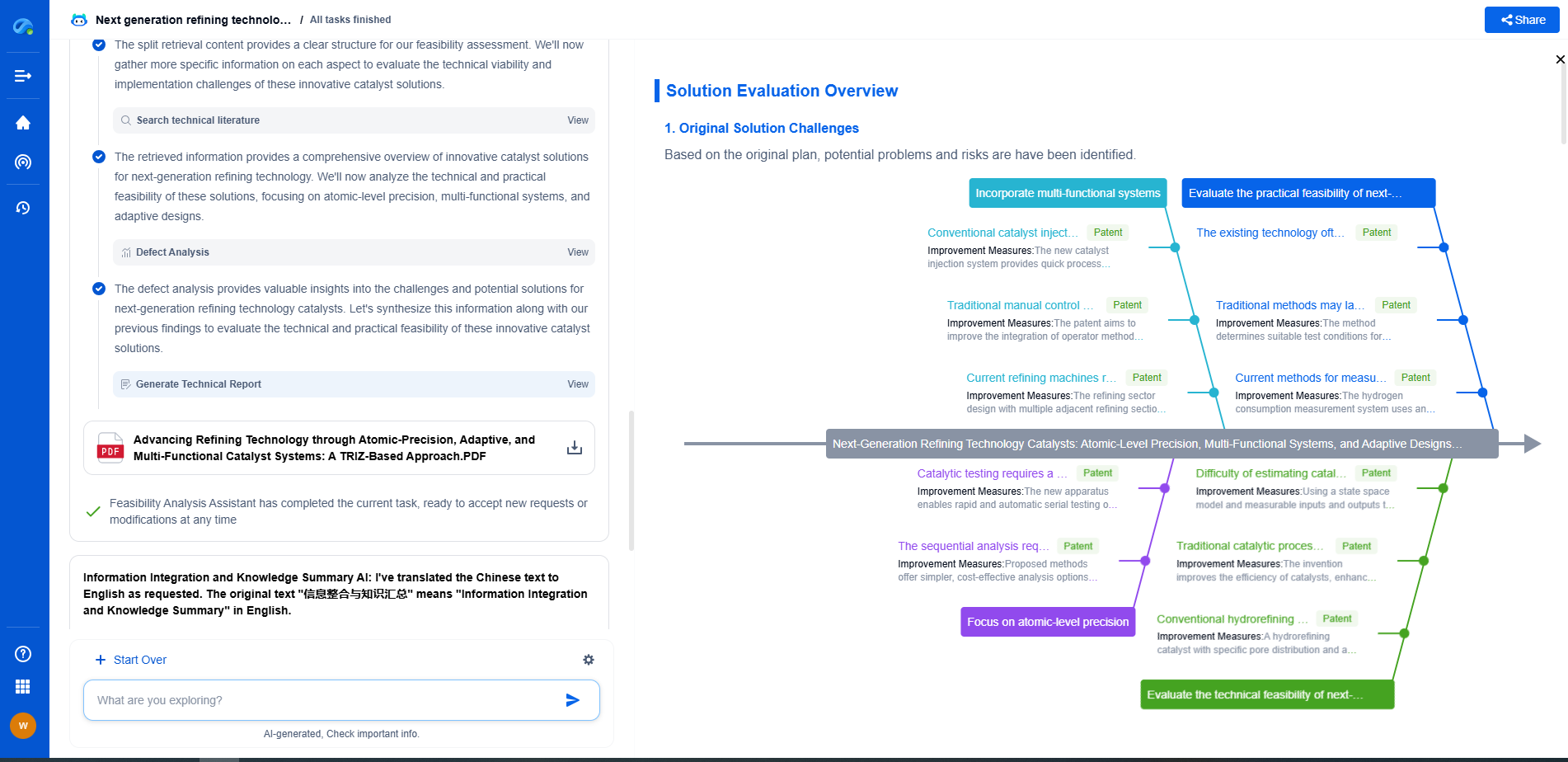What Are RF Filters? SAW vs. BAW vs. FBAR Technologies Explained
JUN 27, 2025 |
Radio Frequency (RF) filters are essential components in modern wireless communication systems. They are used to select or reject specific frequencies, ensuring that the desired signal is received accurately while minimizing interference from other signals. RF filters are crucial for maintaining the efficiency and performance of various devices, from smartphones to communication infrastructure. In this blog, we will explore the technologies behind RF filters, focusing on Surface Acoustic Wave (SAW), Bulk Acoustic Wave (BAW), and Film Bulk Acoustic Resonator (FBAR) technologies.
The Role of RF Filters in Communication
RF filters play a pivotal role in ensuring that wireless communication systems function correctly. By selectively allowing certain frequency bands and blocking others, these filters help to minimize noise and interference, thereby enhancing the clarity and reliability of the transmitted signals. This is especially important in densely packed frequency environments where multiple signals coexist. As the demand for high-speed data and the proliferation of wireless devices continue to grow, the need for efficient RF filters becomes increasingly critical.
SAW Technology
Surface Acoustic Wave (SAW) filters are among the earliest and most widely used types of RF filters. SAW filters operate by converting electrical signals into mechanical waves on the surface of a piezoelectric material. As these waves propagate across the surface, they interact with an interdigital transducer (IDT) that effectively filters the signal based on frequency.
SAW filters are known for their compact size and cost-effectiveness, making them a popular choice in mobile devices. However, they have limitations, particularly in handling high-frequency signals and power levels. Additionally, SAW filters can be more susceptible to temperature variations, which may affect their performance in some environments.
BAW Technology
Bulk Acoustic Wave (BAW) filters differ from SAW filters in that they operate using waves that travel through the bulk of the piezoelectric material rather than just its surface. This characteristic allows BAW filters to handle higher frequencies and power levels more effectively than SAW filters. There are two primary types of BAW filters: film bulk acoustic resonator (FBAR) and solidly mounted resonator (SMR).
BAW filters offer better performance in terms of frequency selectivity and power handling, making them suitable for applications in 4G and 5G networks, where higher frequency bands are utilized. Their robust performance under varying environmental conditions also makes BAW filters more reliable in demanding communication scenarios.
FBAR Technology
Film Bulk Acoustic Resonator (FBAR) is a specialized type of BAW filter that uses a thin film of piezoelectric material sandwiched between two electrodes. This configuration enables FBARs to achieve high-quality factor (Q-factor), which is a measure of the filter's efficiency in selecting a narrow frequency range.
FBAR technology is highly valued for its precision and capability to function at very high frequencies, making it ideal for cutting-edge wireless communication standards that require tight filter performance. While FBAR filters are typically more expensive to produce than SAW filters, their superior performance justifies their use in high-end applications.
Comparing SAW, BAW, and FBAR Technologies
When comparing SAW, BAW, and FBAR technologies, it is essential to consider the specific requirements of the application in question. SAW filters are an excellent choice for low-cost, low-power applications where size is a critical factor. BAW filters, including FBAR, provide better performance at higher frequencies and are more suitable for advanced communication networks like 4G and 5G.
Ultimately, the choice between these technologies will depend on factors such as frequency range, power handling capabilities, environmental conditions, and cost. As communication technologies continue to evolve, the demand for robust and efficient RF filters will drive further innovations in these areas.
Conclusion
RF filters are integral to the success of modern wireless communication, ensuring clear, reliable signal transmission across various frequencies. SAW, BAW, and FBAR technologies each offer unique advantages and limitations, catering to different needs within the industry. Understanding these technologies and their applications is crucial for designing and implementing effective communication systems that can meet the ever-growing demands of today's digital world.
Unlock Next-Gen Innovation in Communication Technology with Patsnap Eureka
The field of communication technology is evolving at breakneck speed—from 5G and satellite systems to next-gen wireless protocols and quantum communications. Staying ahead demands more than just information—it requires strategic insights, real-time patent intelligence, and a deep understanding of technological trajectories.
Patsnap Eureka, our intelligent AI assistant built for R&D professionals in high-tech sectors, empowers you with real-time expert-level analysis, technology roadmap exploration, and strategic mapping of core patents—all within a seamless, user-friendly interface. Whether you're optimizing signal processing designs, navigating 3GPP standards, or exploring IP strategies for IoT and 6G networks, Eureka helps you move faster, think deeper, and innovate smarter.
Try Patsnap Eureka today—and see how it can transform the way you work across the entire communication technology innovation lifecycle.
- R&D
- Intellectual Property
- Life Sciences
- Materials
- Tech Scout
- Unparalleled Data Quality
- Higher Quality Content
- 60% Fewer Hallucinations
Browse by: Latest US Patents, China's latest patents, Technical Efficacy Thesaurus, Application Domain, Technology Topic, Popular Technical Reports.
© 2025 PatSnap. All rights reserved.Legal|Privacy policy|Modern Slavery Act Transparency Statement|Sitemap|About US| Contact US: help@patsnap.com

